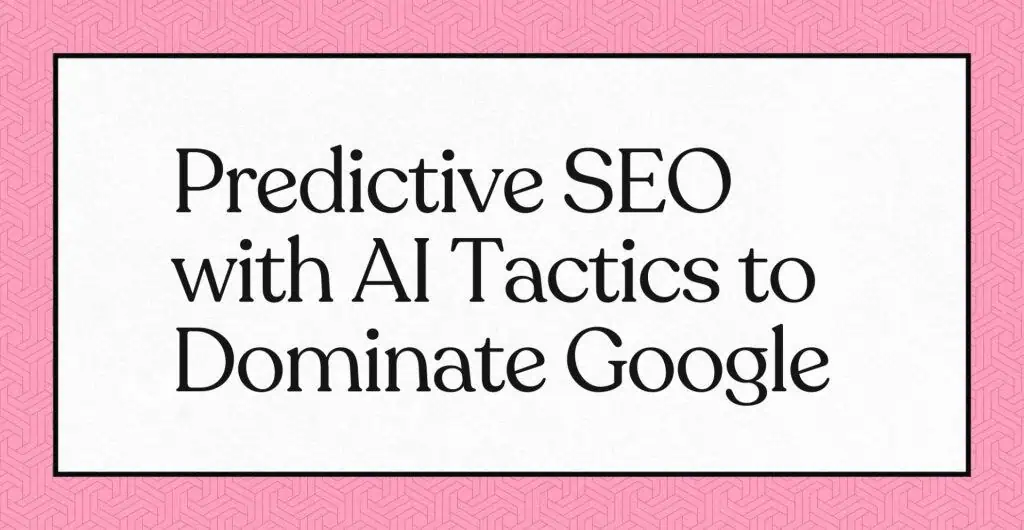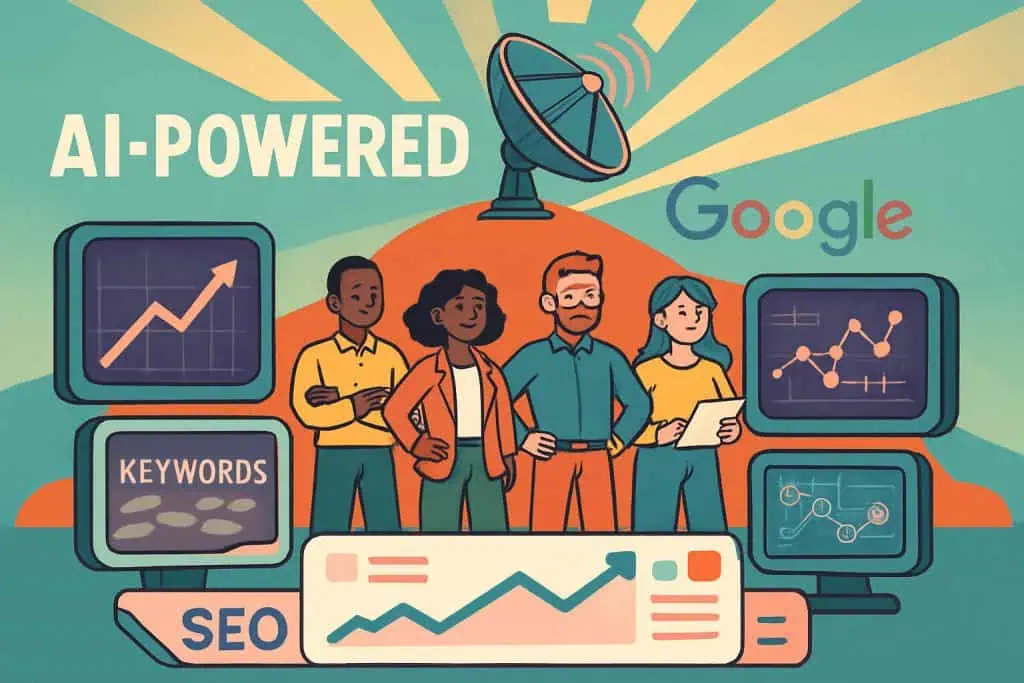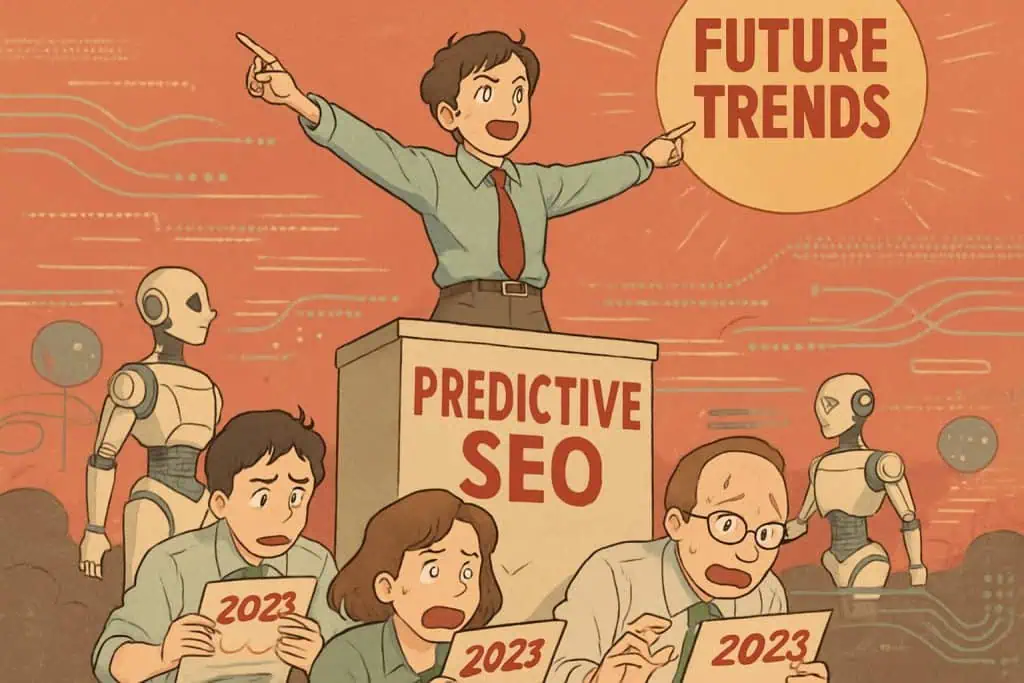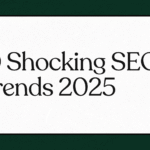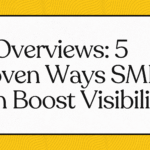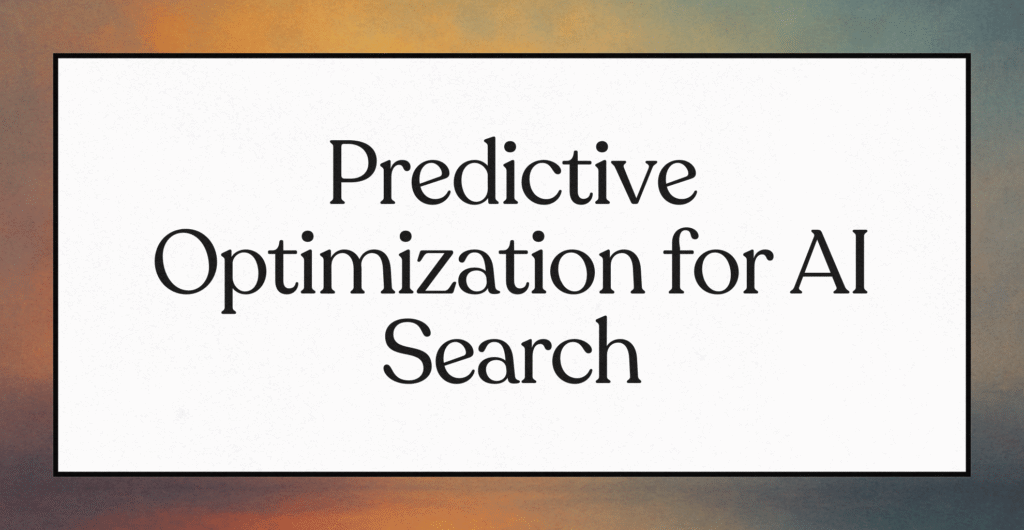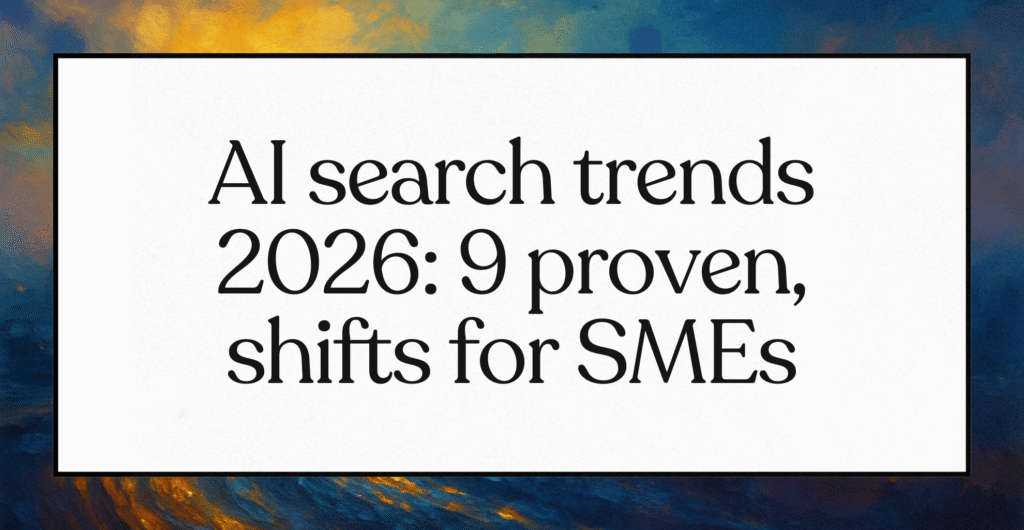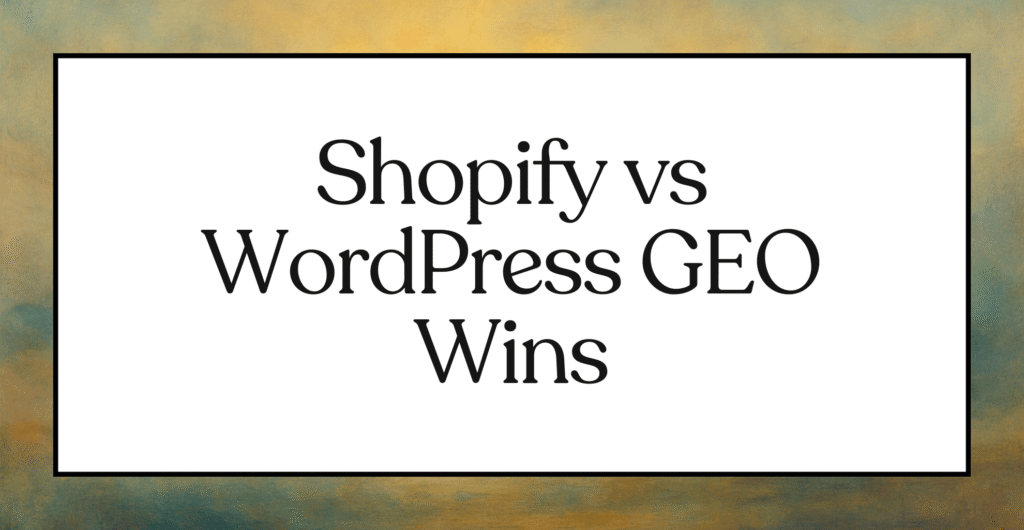Summary
Predictive SEO with AI replaces reactive tactics by using data-driven forecasting, pattern recognition, and continuous learning to anticipate algorithm updates, trending topics, and shifting ranking factors. Probability-based models leverage SERP volatility, historical update analysis, user behavior signals, and cleaned Google Trends data to stabilize rankings, surface high-value keywords early, and guide proactive content, technical SEO, and UX optimization. Case studies and research show tangible impact including 30% organic traffic gains, 42% more B2B leads, and accuracy boosts of 58% nationally and 24% regionally when robust preprocessing is applied.
Search engine optimization has always been a race against time. With more than 500 algorithm changes happening each year, brands that rely on reactive strategies are constantly adjusting after the fact. This is where predictive SEO with AI steps in as a more reliable approach. It turns uncertainty into foresight by giving you the ability to prepare before updates start shifting rankings.
Why Predictive SEO with AI Matters
Reactive SEO is like patching a leaking boat mid-storm. By the time adjustments are made, damage has already occurred. Predictive SEO with AI changes the sequence: instead of reacting, it forecasts. This shift allows you to anticipate which ranking factors are gaining weight, which topics are set to trend, and how algorithm tweaks might alter visibility.
The advantage is clear. Rather than scrambling, teams can plan campaigns and content calendars aligned with what search engines are likely to prioritize in the near future.
How Predictive SEO with AI Works
At its foundation, predictive SEO with AI relies on data models that learn from historical patterns and emerging signals. These models pick up correlations humans would miss, such as shifts in query intent, SERP feature evolution, or content formats that start outperforming traditional articles.
The result is not guesswork but probability-driven forecasts. When a business integrates these insights into its SEO playbook, they create a cushion against the volatility of search updates.
Strategic Benefits of Predictive SEO with AI
- Stability in rankings by anticipating changes instead of chasing them
- Early identification of high-value keywords before competitors
- Data-driven guidance for link building and content investment
- Reduced dependency on trial-and-error after every update
By adopting predictive SEO with AI, companies move from firefighting to structured preparation. This mindset gives them both control and confidence.
The Future of Predictive SEO with AI
SEO will never be static. Algorithms evolve because user behavior evolves. The only sustainable approach is one that adjusts faster than the pace of change. Predictive SEO with AI makes that possible by aligning strategy with probability models rather than waiting for official confirmations.
Core principles of AI-Powered Predictive SEO
The foundation of predictive SEO rests on several key principles that distinguish it from conventional optimization approaches. These principles, which include data-driven forecasting, pattern recognition, continuous learning, and proactive optimization, are the pillars of AI-powered predictive SEO. Understanding and applying these principles is crucial for success in the ever-changing market of SEO, and it will empower you with confidence in your SEO strategies.
- Data-Driven Forecasting : AI models analyze vast datasets of historical algorithm updates, SERP changes, and user behaviour patterns to identify predictive indicators.
- Pattern Recognition: Advanced machine learning algorithms detect subtle patterns in ranking fluctuations that might escape human analysis.
- Continuous Learning: AI systems constantly refine their predictive capabilities by incorporating new data and outcomes from previous predictions.
- Proactive Optimization: Rather than reacting to changes after they occur, predictive SEO enables content and technical optimization in anticipation of likely algorithm shifts.
According to a Forrester study referenced in industry research, insights-driven companies are predicted to significantly outperform their less-informed competitors financially, underscoring the business value of predictive approaches. This should inspire you to adopt predictive SEO and reap its financial benefits.
How AI anticipates Google Algorithm changes
data sources for algorithmic predictions
AI models leverage multiple data streams to forecast Google’s algorithm changes with increasing accuracy:
SERP Volatility Measurements
SERP the frequency and magnitude of changes in search engine results page rankings- serves as a critical indicator of algorithm adjustments. Tools like Semrush Sensor track volatility across numerous categories on both mobile and desktop, helping to highlight possible Google updates in progress.
Recent research by Authoritas found that Google AI Overview rankings (the webpages cited in AI-generated answers) demonstrate even higher volatility than traditional organic search rankings, with 70% of AI Overview rankings changing within two to three months.
This indicates the increasing complexity of Google’s ranking systems:
- AI Overview ranking volatility score: 0.68 (8 weeks), 0.73 (13 weeks)
- Google Search organic ranking volatility score: 0.49 (8 weeks), 0.55 (13 weeks)
Historical update analysis
AI systems analyze patterns from past algorithm updates, identifying common characteristics and timing. Machine learning models can recognize cyclical patterns or triggering events that typically precede algorithm changes by processing data from hundreds of previous updates.
User Behavior Signals
AI tools increasingly incorporate user behaviour metrics such as click-through rates, dwell time, and engagement patterns to forecast how Google might adjust its algorithms to better serve user intent. These signals help predict shifts in how Google evaluates content quality and relevance.
Predictive SEO with AI Modeling Techniques
Several AI approaches have proven effective in SEO forecasting:
Machine learning algorithms for trend detection
Advanced algorithms analyze search volume trends and patterns across various industries to predict future demand for specific keywords. This allows SEO professionals to optimize their content strategy ahead of time, focusing on keywords expected to gain popularity.
For example, extreme gradient boosting models, a machine learning algorithm with strong predictive capabilities in various fields , could be applied to SEO trend forecasting. These models are particularly effective in handling large datasets and identifying complex patterns, making them a valuable tool for predicting future search trends and optimizing content strategy.
Statistical preprocessing for enhanced forecasting
Research published in April 2025 highlights how statistical preprocessing, a set of techniques used to clean and prepare data for analysis, can significantly improve the forecasting power of Google Trends data. The study proposes a methodology using hierarchical clustering, smoothing splines, and detrending to address issues like missing values, sampling variability, and noise problems that have recently increased in Google Trends data.
By applying these techniques, SEO professionals can enhance the accuracy of their predictive models and make more informed decisions about their content strategy.
According to the research’s validation tests, these preprocessing techniques could enhance predictive accuracy by 58% nationally and 24% at the regional level when applied to SEO.
Protecting SEO stability with AI-Driven insights
Content strategy refinement
AI’s data processing capabilities help develop innovative content strategies anticipating user needs before they become widespread search queries.
Using AI-powered analytics, SEO specialists can:
- Analyze survey data , customer reviews, and sales call records to uncover valuable insights for future messaging
- Identify high-value keywords and topic clusters expected to grow in importance
- Map out a focused content calendar targeting predicted high-opportunity terms
- Create content that addresses emerging user intents before competitors
Technical SEO resilience
Predictive analytics enables more resilient technical SEO through the following:
- Anticipatory site crawls and technical audits that identify potential issues before they affect rankings
- Continuous rank tracking across devices and locations to detect early signs of algorithm shifts
- Proactive backlink monitoring and opportunity identification
- Pre-emptive solutions for potential technical vulnerabilities that might be targeted in future updates
User experience optimization
User experience increasingly influences search rankings, and predictive models allow businesses to optimize these experiences proactively:
- AI can analyze past user behaviours to forecast how website changes might impact engagement metrics
- Predictive tools identify potential pain points before they cause ranking issues
- Machine learning models suggest UX improvements that align with predicted algorithm priorities
Case studies of successful predictive SEO
A leading online retailer integrated predictive analytics to refine its SEO strategy. By analyzing past traffic data, customer interactions, and search trends, it could predict which new products would become popular. Optimizing pages for these upcoming trends led to a 30% increase in organic traffic within a few months.
A Moz case study highlighted how a B2B company improved its lead generation by 42% after using predictive SEO to optimize its content strategy. By anticipating industry-specific search trends, the company created targeted content that ranked well, and those topics gained popularity.
A small tech firm utilized predictive analytics to detect emerging technology trends and optimize its content accordingly . This proactive approach helped it rank on the first page of Google for several key terms related to new tech advancements before its competitors, boosting its visibility in a crowded market.
Challenges and ethical considerations in predictive SEO with AI
Prediction accuracy concerns
Despite sophisticated algorithms, absolute precision in predicting Google updates remains challenging due to the following:
- The uncontrollable and unpredictable nature of search engine algorithm fluctuations
- Competitors’ strategy changes affecting the competitive industry
- Technological developments that can disrupt existing models
One industry source notes that “absolute precision may be a stretch” when forecasting SEO outcomes. However, with solid methodologies, businesses can formulate educated predictions about future performance.
The quality of input data significantly impacts predictive accuracy. Recent research indicates Google Trends data quality has deteriorated, with more zeros and noise even for previously stable queries. This requires sophisticated preprocessing to maintain reliable forecasts.
Ethical considerations
There’s growing concern about whether predictive SEO might encourage attempts to “game” Google’s algorithm rather than focus on providing genuine value to users. As predictive capabilities become more sophisticated, the ethical line between optimization and manipulation becomes increasingly essential.
Google quality raters now assess whether the content is AI-generated, with automated or AI-generated content potentially earning a “Lowest” rating. This suggests that while AI can help predict algorithm changes, it should be used ethically in content creation to avoid potential penalties.
Ethical predictive SEO with AI requires:
- Transparency about how AI tools are being used
- Focus on enhancing user experience rather than simply manipulating rankings
- A balanced approach that combines AI predictions with human judgment and quality content creation
- Consideration of diverse user needs rather than optimizing solely for dominant user segments
Will AI Redefine SEO Strategy Permanently?
Research from fields outside marketing already points the way. In urban planning, predictive systems anticipate how people move and behave, and those same principles apply when forecasting how users search online. As models advance, the potential of predictive SEO with AI becomes clearer: forecasting user intent shifts before they fully appear in query data.
The Role of Explainability
Complex models introduce another layer of challenge. Healthcare has already turned toward explainable AI to build trust in prediction tools. SEO will face a similar path. Future platforms for predictive SEO with AI won’t just provide a forecast; they’ll show why a keyword cluster is likely to trend or why a ranking factor may gain weight. That transparency makes strategies more actionable.
Human Expertise Still Matters
The rise of predictive SEO with AI doesn’t erase the need for specialists. It changes what they focus on:
- Interpreting predictive outputs rather than chasing every technical adjustment
- Linking probability-driven insights with creative content planning
- Applying judgment when AI-suggested strategies collide with brand voice or ethical boundaries
In this model, human expertise becomes sharper, less about mechanical tweaks and more about strategic alignment.
Balancing Prediction with Purpose
Predictive SEO with AI transforms optimization into a proactive discipline. Anticipating changes lets organizations stabilize rankings and adapt faster than competitors. But predictive strength alone isn’t enough. Search engines still reward content that serves human needs. That’s why the best results come when prediction is paired with purpose.
Future winners will be those who integrate predictive SEO with AI into workflows while never losing sight of why updates happen: to match users with the most relevant answers. Technology provides the foresight, but people ensure the strategy stays meaningful.
Sources
-
- https://blog.hubspot.com/marketing/ai-seo
- https://searchengineland.com/google-ai-overviews-organic-rankings-volatile-452255
- https://arxiv.org/abs/2504.07032
- https://screpy.com/using-ai-to-enhance-seo-tactics-and-performance/
- https://seomator.com/blog/seo-forecasting
- https://www.ncbi.nlm.nih.gov/pmc/articles/PMC11871169/
- https://www.alliai.com/seo-glossary/serp-volatility
- https://digitalconfex.com/google-algorithm-updates-2025-seo-trends/
- https://screpy.com/predictive-analytics-and-seo-a-perfect-match/
Q&A
Q1: What is predictive SEO with AI and why does it matter for algorithm updates?
It uses machine learning to forecast ranking factor shifts and SERP changes so teams plan ahead instead of reacting after volatility hits.
Q2: Which data sources power accurate SEO predictions about Google updates?
SERP volatility metrics, patterns from past updates, user behavior signals, and statistically preprocessed Google Trends data inform probability-driven forecasts.
Q3: What measurable benefits can predictive SEO deliver for growth-focused teams?
Early keyword discovery, steadier rankings, smarter link and content investment, plus results like 30% organic traffic lifts and 42% lead growth in cited cases.
Q4: How do ethics and explainability shape AI-powered SEO strategies?
Use AI transparently to enhance user value, avoid manipulation, prefer explainable models, and pair machine insights with human judgment to stay compliant and resilient.
